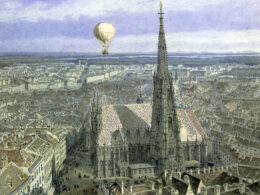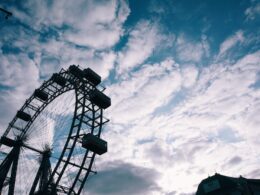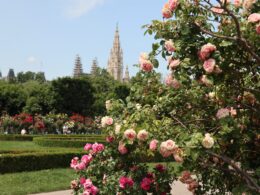Table of Contents
- St. Peter’s Church Vienna
- Dominican Vienna Church – Dominikanerkirche
- Karlskirche – St Charles Church Vienna
- St. Leopold Vienna Church
- Stephansdom – St Stephen’s Vienna Church Cathedral
- Church of the Minorities – Minoritenkirche
- St. Francis of Assisi Church of Vienna – Unusual Church Marks Centennial Year
- Votive Church Vienna
- St. Michael’s Vienna Church
- Heilig-Geist-Kirche
- Christkönigskirche – Christ church Vienna
- Donaucity-Kirche
- St. Augustine Vienna Church Augustinian Church Vienna
- Wotruba Church
- St. Ruprechts Church
- Schottenkirche
- Maria am Gestade
- Melk Abbey
- Heiligenkreuz Abbey
- FAQ – Frequently Asked Questions about Vienna church
- Related articles:
One of the most visited structures in any tourist destination is the church. Travelers to this Austrian city are in luck as they not only get to visit the Vienna church because they can also have a close view of the intricate architectural designs of these sacred buildings.
Tourists have so many places to explore while in Vienna. But if you’d like to do things out of the usual, then a tour of the Vienna churches is strongly recommended.
Vienna is home to beautiful ancient religious structures that have survived natural and man-made calamities. Try to visit every single Vienna church. And find out what makes them different from each other.
St. Peter’s Church Vienna

This is the second oldest famous church in Vienna boasting of Baroque architecture. Built for six years from 1702 to 1708, the church’s façade features angled towers and an attractive entrance portal.
Inside this religious structure, visitors will surely marvel at the lovely:
- watercolor paintings on the walls and ceilings
- wood carvings
- antique altar pieces
St. Peter’s Church Vienna is located in Peterskirche and has already undergone major renovation works. Much of its original colors have been restored to full grandeur.
Patterned after St. Peter’s in Rome, this oval church features a massive dome with a fresco done by J.M. Rottmayr. It was said to be occupied by a late Roman church and another one founded by Charlemagne. The chapels of St. Michael and Barbara can also be found here.
Dominican Vienna Church – Dominikanerkirche
Dominikankirche (Rosary Basilica ad. S. Mariam Rotundam) a Baroque church considered to be one of the most beautiful in the Austrian capital of Vienna. It was promoted to a minor basilica in 1927 and features frescoes in the nave.
The present church is already the third on the site. The first two suffered from fire and severe damage caused by the First Turkish Siege.
Karlskirche – St Charles Church Vienna
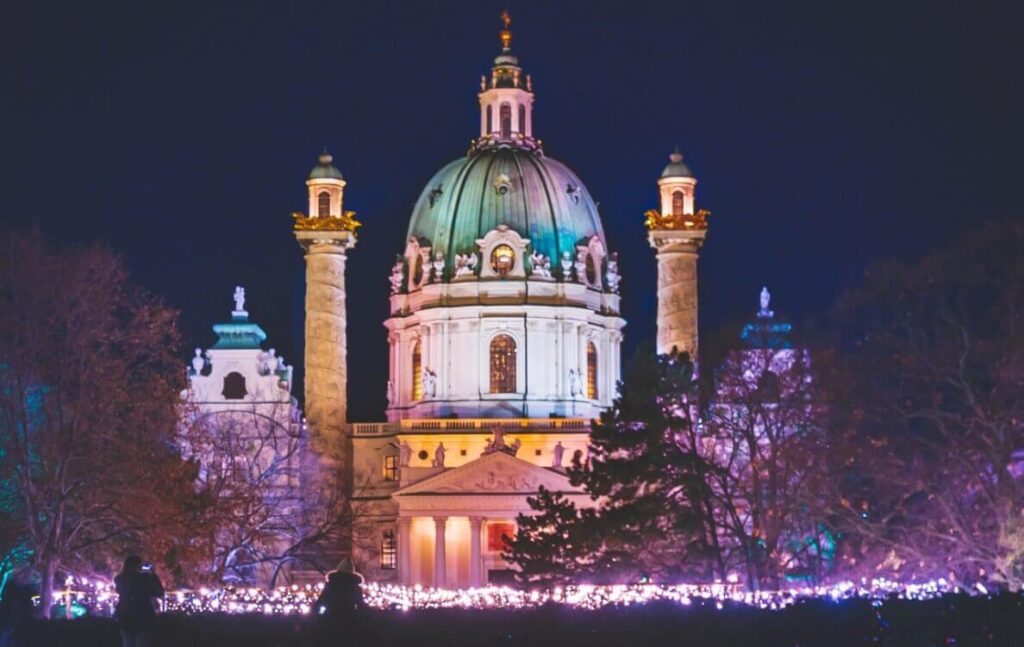
This is Vienna’s most popular Baroque building featuring tall white stone columns on the outside. There are Oriental influence and beautifully engraved scenes.
St Charles church Vienna has been constructed between 1715 and 1737. This was put up in honor of Karl Borromeo. He was the patron saint that led the fight against the plague epidemic in 1713. At the top of the cupola or dome, you can view the frescos of Michael Rottmeyr.
Vienna boasts of many religious landmarks that never fails to attract tourists each year from around the world. And one of them is Karlskirche. Karlskirche is the Viennese name of St. Charle’s Church Vienna, a baroque church situated on Karlsplatz. It is one of Vienna’s greatest buildings of all time.
Opened in 1737, this Vienna church was commissioned by then Emperor Charles VI as a thanksgiving for sparing the city from the Black Plague that struck in 1713. At the height of the plague, the emperor promised to build a church to honor St. Charles Borromeo. The Italian bishop is known for ministering to Milanese plague victims. And all of that if the plague left the city.
Karlskirche Frescoes
Inside this beautiful religious structure are detailed frescoes painted by J.M. Rottmayr. The frescoes were created for five years from 1725 to 1730. St. Charles Borromeo is depicted in the vault frescoes while begging the Holy Trinity to end the plague that swept Vienna. Other than the amazing paintings, the architectural design of the church is also a thing to behold.
It is a combination of ancient Greece as evident in the columbed portico. Then ancient Rome through the two Trajanesque columns in the facade. And contemporary Viennese Baroque as evident in the dome and towers.
The dome of St. Charles Church Vienna is made from green copper. It’s 236 feet high. Owing to its height, this part of the religious landmark is one of those that stands out in the Vienna skyline.
St. Leopold Vienna Church
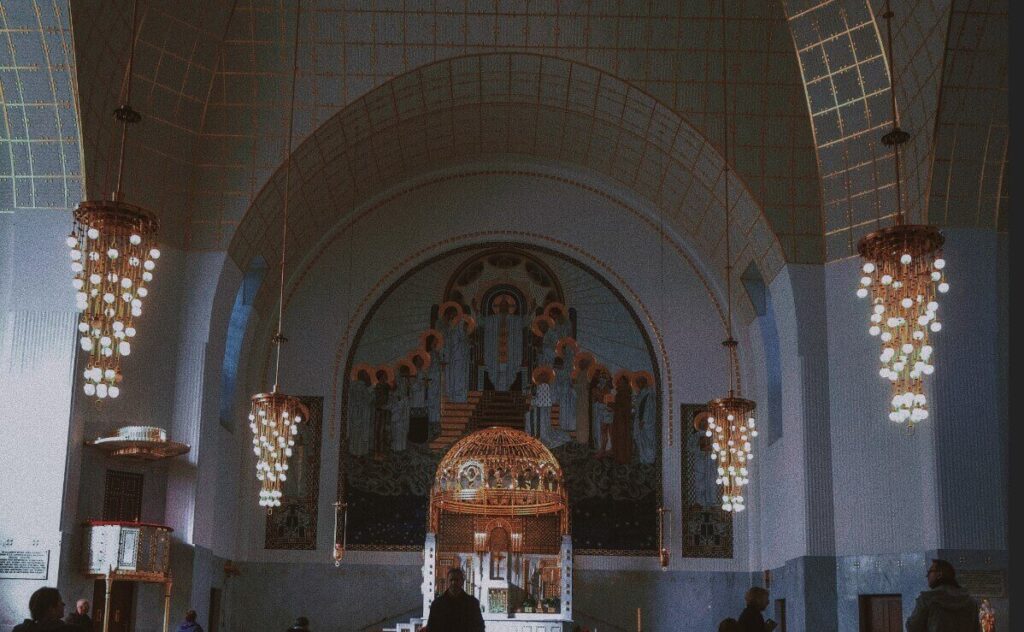
Vienna is home to several Catholic churches that boast of beautiful architectural designs. One of them worth visiting is the Church Am Steinhof or the Church of St. Leopold.
It’s one of the world’s most important Art Noveau churches. Situated in the 21st district in the outskirts of the Austrian capital, the church used to be the Steinhof Psychiatric Hospital. And it ranks 8th among the 297 attractions in Vienna.
Built in between 1904 and 1907, architect Otto Wagner is behind the design of St. Leopold Church. The stained glass windows, meanwhile, are the works of Kolo Moser. One of the best features of the church is its copper-covered dome. That is a concrete example of an Art Noveau design. The dome’s cupola is made of gold. Specifically, a total of two kilograms of gold was used to create the dome’s gold gilding.
In designing the church, Wagner consulted psychiatrists to ensure that everything matched the ideals of the mental health institution.
The church features:
- a special room for a doctor
- a special room for an emergency staff
- special emergency exits
- additional toilets
- additional chairs with no sharp edges or corner
St. Leopold Holy Water
For the holy water, Wagner did not use the usual basin. He used a different kind of dispenser for hygiene reasons. The windows were also well positioned. They are arranged in a north-south axis to allow as much light as possible in the interior.
In 2006, the church underwent renovation works. During which the marble facades were replaced and the windows, mosaics. And statues were thoroughly cleaned and renewed.
Take note that the interior of this Vienna church is open only on weekends. It would be best to go there either on a Saturday or Sunday if you’d like to explore the features inside.
Stephansdom – St Stephen’s Vienna Church Cathedral

The Stephansdom (St. Stephen’s Cathedral or St Stephen’s church Vienna) is one of Vienna’s landmark buildings. And not only a famous tourist attraction, but also still used as a place for prayer and church concerts.
Along with the plaza before it (Stephansplatz) it’s an important central part of the city. There are metro lines crossing here, the major shopping street Kärtnerstraße starting here. And of course, the famous horse carriages called Fiaker to depart from here.
It is a wonderful place to visit and explore. And flights are available into Vienna International Airport if you are excited enough at the prospect of seeing such amazing and awe-inspiring architecture.
Situated at Vienna’s main square Stephansplatz, the presence of this building led to the city’s being declared by UNESCO as a World Heritage Site.
History
The Gothic cathedral was first built in 1147 and its most recognizable characteristic, the diamond-patterned tile roof. It was added in 1952.
However, recent discoveries have found the land where the Stephansdom was used as a cemetery dating back to Ancient Roman times in the 4th century.
In 1258, a large fire destroys most parts of the church. A larger church is built on the remains. In the early 14th century, the Gothic Albertine choir hall is constructed.
The year 1359 sees the foundation laid for further lateral reconstruction of the Gothic church. In addition, the construction was planned by four towers. This is the building of the Stepanshdom as we know it today.
Under the Turikish siege in 1683, parts of the Stephansdom are damaged by cannon balls. The Gothic wing altars are eplaced by early Baroque Baroque marble altars.
A main attraction of the St. Stephens Cathedral is its altar where three figures are situated:
- Mary
- St. Catherine
- St. Barbara
Around 1720, Vienna had an outbreak of the Bubonic Plague. Over 11,000 persons were buried in the catacombs below the Stephansdom.
Over the next centuries, parts of the cathedral are renovated and reconstructed.
What To See
- Interior. There are 18 altars in the main part of the church. The HighAltar and the Wiener Neustädter Altar are the most famous. There are many more art treasures like the tomb of Prince Eugene of Savoy. There are the pulpit by Anton Pilgram, the sepulcher of Emperor Frederik III by Niclas Gerhaert. And the watchman`s lookout (probably a self portrait of the sculptor).
- Towers. The north tower has an elevator and stairs. Make sure to climb up 343 steps via a spiral staircase to the observation platform. The views from the top are worth the ascent it!
- Catacombs. Take the guided tour below the ground. You’ll see the usual assortment of sarcophagi holding the bones of dead rulers, archbishops, and other personages. Somewhat stranger are the bronze containers where kidneys, livers, etc. of Habsburg emperors were interred in what might be called an undertaker’s waste dump. Finally, you’ll explore the catacombs. There are the bones of more than 15,000 Viennese have been stacked like kindling since the 1700s.
The Pummerin Bell
The Stephansdom has 23 bells, but the largest and most famous is the „Pummerin“.
At 20,130 kilograms (44,380 pounds), the Pummerin is the largest bell in Austria and the second largest swinging bell in Europe. Originally cast in 1711 from cannons captured from the Muslim invaders. It was recast (partly from its original metal) in 1951.
The Pummerin sounds on only a few special occasions each year. Christmas eve, the arrival of the new year and easter night.
All-Inclusive Ticket – Visiting Stephansdom
| Visiting times | Monday to Sunday from 9.00 am to 5.30 pm |
| Prices | Adults (€ 16.90) and children (€ 4.90) |
| Duration | 2.5 hours |
CATHEDRAL Stephansdom – Visiting Time & Price
| Visiting times | Monday to Saturday 09.00 am – 11.30 am 1.00 pm – 4.30 pm Sundays and public holidays 1.00 pm – 4.30 pm |
| Prices | Adults € 6.50 Children 6 – 14 years € 2.50 Children 0 – 6 years free of charge |
| Duration | 40 minutes |
Tour of the Catacombs Stephansdom – Visiting Time & Price
| Visiting times | Monday to Saturday 10.00 am – 11.30 am 1.30 pm to 4.30 pm Sundays and public holidays 1.30 pm to 4.30 pm |
| Prices | Adults € 6.50 Children 6 – 14 years € 2.50 Children 0 – 6 years free of charge |
| Duration | approx. 30 minutes |
More info about Stephanskirche!
Did You Know This About The Stephansdom?
- The cathedral is shown on the Austrian 10 Cent coins.
- The Stephansdom is lovingly referred to as “Steffl”, a diminuitive form, by the Viennese.
- Its south tower is 136m tall and makes a prominent part of the skyline (and of the vienna.net logo!)
- Over 3.5 million people visit the Stephansdom each year.
- The story is that Ludwig van Beethoven discovered the totality of his deafness. When he saw birds flying out of the bell tower as a result of the bells’ tolling but could not hear the bells.
- Famous composer Wolfgang Amadeus Mozart had his wedding in the Stephansdom in 1782. And his funeral only nine years later.
- The relics collection in the Stephansdom includes a piece of the tablecloth allegedly from the Last Supper.
- Nine stonemasons are on staff fill time to reconstruct and renovate various parts of the cathedral.
- The Pummerin, the Stephansdom’s largest bell, rings only on special occasions. Including the death of a Pope.
Church of the Minorities – Minoritenkirche
A historical religious structure worth exploring in Vienna is the Minoritenkirche or the Church of Minorities. Built in the latter part of the Middle Ages, this Vienna church looks much older than the other old churches in the city.
Unlike Stephansdom, however, Minoritenkirche was left in its original French Gothic style. Its original belltower was damaged several times during the war and was later replaced with a flat roof.
One of the church’s greatest features is a life-sized copy of the famous Last Supper of Leonardo da Vinci done in a large mosaic on the northern wall. Done by Roman artist Giacomo Rafaelli, the mosaic was commissioned by Napoleon I in 1809.
Other important sections of the church are the Neo-Gothic high altar, the monument for the poet Pietro Metastasio built in 1855, the Madonna in Carrara marble done by Antonio Rossellino of Italy and several beautiful paintings.
Minoritenkirche Exterior
The exterior of the Minoritenkirche features French architecture. There’s a Tympanum divided into three fields with Christ in the center as well as the figures of Mary Magdalene and John the Evangelist on the left.
On certain occasions, small concerts are also being held here.
This is the former church of the Minorites which has become the Franciscan church in 1957. The original church of the Frates Minores was built in 1230 but was ordered replaced by Duke Albrecht the Wise.
At present, this Gothic church features the mosaic copy of Leonardo da Vinci’s famous Last Supper courtesy of Giacomo Raffaelli which was commissioned by Napoleon I. Above the high altar is another art work, a copy done by Chr. Unterberger.
St. Francis of Assisi Church of Vienna – Unusual Church Marks Centennial Year
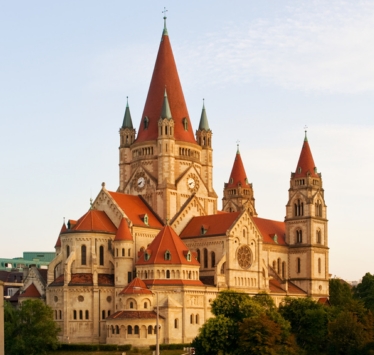
In 2013, The St. Francis of Assisi Church of Vienna celebrated its 100th year anniversary. Also known as the Kaiser Jubilee Church and the Mexico Church, this Basilica-style religious structure is being headed by parish priest Father Mario.
What makes this Catholic church unique is the fact that it’s made from bricks and not the usual stone. Situated in Vienna’s Second District Leopoldstadt specifically on Mexikoplatz, it was constructed between 1898 and 1910. Today, it is being managed by the Order of the Holy Trinity.
This church boasts of several features that make it worth visiting. One of these is the Art Noveau style chapel dedicated to Empress Elizabeth situated on the left side of the church next to the choir. The chapel is octagonal and patterned after the Palatine Chapel in the Aachen Cathedral.
Gold mosaics designed by artist Carl Ederer instead of frescoes adorn the chapel while its walls are covered with marble. A large mosaic of Sissi a Saint Elizabeth of Hungary also adorns the vault of the chancel.
St. Francis of Assisi Church Construction Support
The construction of the chapel was supported by donations from the Red Cross, an organization which the Empress got actively involved in as a patron. It was completed in 1907 and consecrated a year after.
Empress Elizabeth of Austria was the wife of Emperor Franz Joseph I who was assassinated in 1898 by an Italian anarchist namaed Luigi Lucheni. Popularly known as Sissi, the Empress was devoted to helping the poor while she was still alive.
The centennial celebration of the St. Francis of Assisi church is also timed with the 800th anniversary of Giovanni de Matha, the French founder of the Order of the Holy Trinity that now manages the religious institution. Activities lined up this weekend are an open house with hymns and classical music as well as an exhibition.
Votive Church Vienna

One distinct historical famous church in Vienna that should be included in every tourist’s itinerary is the Votivkirche or the Votive Church Vienna. This religious structure is well known for its two high spires at 99 meters that rise above the trees and buildings around it.
Situated on RingStrabe in Vienna’s 9th district just near the University of Vienna. This Neo-Gothic church was erected in honor of then Emperor Franz Joseph as a form of thanksgiving. And it took 23 long years to build from 1856 to 1879.
It was at this site where the Emperor experienced an assassination attempt while walking around. Fortunately, he survived the stabbing attack by Hungarian nationalist Janos Libenyi which seriously injured his neck.
After that incident, the Emperor’s brother, Ferdinand Maximilian Joseph, began collecting money and started a competition inviting architects and other artistic people to create a design for this one Vienna church.
Architect Heinrich von Ferstel, who was only 26 at that time, got the assignment. Emperor Franz Joseph himself supervised the construction of the Votivkirche which was dedicated on April 24, 1879.
The church was named after the word votive which means an offering made in exchange for a fulfillment of a vow or pledge. Rightly so as the Kaiser-Franz Joseph family had the structure built as a thanksgiving for the failed assassination attempt on the Emperor.
Renovation works have been done in the church after it was damaged during the Second World War. The Votivkirche can be visited from Tuesday to Sunday starting at 10 a.m. A small fee is required to enter the premises.
St. Michael’s Vienna Church
A tour of Vienna’s religious landmarks should include a visit to St. Michael’s Church. As one of the city’s oldest churches, the place situated at Michaelerplatz just across the Hofburg Palace is in honor of Archangel Michael.
Originally, it was the Imperial Court’s parish church and was then named Zum heiligen Michael. A Romanesque building, the church features a nave and two aisles that highlight the ancient Gothic structure. Side chapels were later added to the building.
There’s so much explore inside the church. The high altar shows a Rococo sculpture called “Fall of the Angels” executed by Italian sculptor Lorenzo Mattielli. The art work shows a cloudburst with angels and cherubs that fall from the ceiling towards the high altar.
At the center of the high alter is Maria Candida, a Byzantine icon of the Virgin Mary being carried by two archangels. Two chapels are in place as well. The northern one features the Adoration of the Child while the southern chapel displays Gothic stone sculptures and a wooden crucifix.
A gilded pipe organ is another attraction of the church. It is considered the biggest Baroque organ in Vienna and was played once by young Joseph Haydn. A must-see inside St. Michael’s Church is the Michaelergruft or the crypt underneath the building.
It is here where the city’s rich citizens and noblemen were buried. So far, more than 4,000 corpses have been preserved here with hundreds of them still in their burial wear and wig. There are some open coffins as well that can be viewed.
Heilig-Geist-Kirche
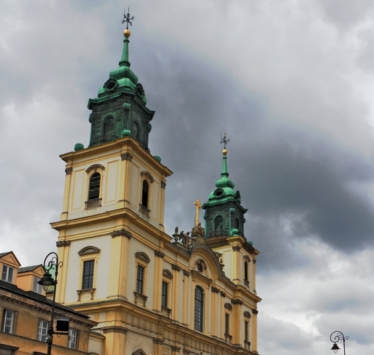
This is the modernist famous church in Vienna (Ottakring) designed by Josef Plecnik of Slovenia. Situated in the 16th district of the city, it features an unusual design. It is considered as among Plecnik’s most famous buildings and his most important contribution to Vienna.
This religious building boasts of stained glass clerestory and an altar featuring an aluminum dove and golden sunburst. On the back is a mosaic which illustrates the seven attributes of the Holy Ghost.
Christkönigskirche – Christ church Vienna
Located in the 15th district specifically in the Burjanplatz Vogelweidplatz, the Christ the King church is a Roman Catholic church which originally served as a memorial church for the deceased. It was designed by architect Clemens Holzmeister while construction started in 1933.
It was in 1934 when the structure was consecrated as Christ the King Church. Among the notable features of the church are its stained glass designed by Karl Hauk, Christ the King mosaic, commemorative plaque for Hildegard Burjan, pneumatic organ from Johann Kauffman and a crypt.
Donaucity-Kirche
The Donau City Church formerly called Christus is a Roman Catholic parish church located in the 22nd district. Standing beside the Vienna International Centre, it was designed by architect Heinz Tesar and is made from Styrian steel.
Inside are a series of potholes which provide natural light during the day and create a ship-like atmosphere at night. The church has simple decor and features a curving skylight that represent the wound of Christ while on the Cross.
At the back of the church are community rooms where meetings, presentations, and exhibitions are held.
St. Augustine Vienna Church Augustinian Church Vienna
Religious structures abound in Vienna and one that stands out is the St. Augustine or Augustinian Church Vienna. This church located on Josefsplatz and one of the oldest parts of Hofburg is where royal weddings took place in the past.
Built in the 14th century, the place then served as the parish church of the imperial court of the Hasburgs. It now showcases the Gothic architectural style.
Among the royal weddings that took place here are those of:
- Maria Theresa and Francis Stephen of Lorraine in 1736
- Maria Antoinette and Louis XVI of France in 1770
- Marie-Louise of Austria and Napoléon in 1810
- Franz Joseph and Elisabeth of Bavaria in 1854
Notable parts of the church are its two organs which up to now still produce heavenly sounds, the hanging chandeliers, the side altar with the painting of Emperor Karl I and the cenotaph or memorial to Archduchess Maria Christina (the sculpture was done in 1805 by Antonio Canova).
There used to be 18 side altars here but were removed during its restoration in 1784. A visit to this church would not be complete without going to the Loreto Chapel.
The Main Altar
Situated on the right side of the main altar, it is here where visitors can find the silver urns that contain the hearts of the Habsburg rulers. The Imperial Crypt is where their bodies are kept.
A unique musical spectacle also takes place inside St. Augustine Church every Sunday. Regardless of your religious affiliation and whether you want to hear mass or simply visit during a service, you will be entertained with a free concert featuring the works of Mozart, Schubert, Haydn, and other Austrian musicians.
A small orchestra and a choir normally perform here from the choir loft inside the church. The Sunday mass starts at 11 a.m. but it is advised that you go there early to ensure you get a seat as it often gets standing room only in this religious place.
Wotruba Church
In a city where you find most of the buildings inspired by Baroque, Renaissance or Historicist styles, there is one church that stands out because of its ultra-modern, abstract structure.
The Kirche Zur Heiligsten Dreifaltigkeit, better known as the Wotruba Church is an architectural masterpiece by one of Austria’s well-known 20th-century sculptor, Fritz Wotruba.
Standing atop a small hill in between Rysergasse and Georgengasse bordering the Wienerwald in the district of Liesing, the Wotruba Church was built between 1974 and 1976 taking inspiration from the Chartres city in France.
Wotruba wanted it to represent the essence of modern Europe. He died before it was completed and the work was continued by architect Fritz Mayr. When it was done, the locals initially protested and opposed the unusual structure claiming it to be an inappropriate house of devotion and prayer.
However, the art world heaped accolades on the building, and the people eventually saw its modernist merits against the rustic beauty of the surrounding woods. At first glance, the building looks like a stack of concrete Lego blocks where there appear to be no clear entrances or even a traditional church dome or spire.
The church is actually built from 152 large concrete blocks assembled asymmetrically with narrow vertical glass panes strategically placed around it so that the sunlight that comes in through the windows makes a spectacular play of colors. Inside is a wide space to accommodate about 250 people. The altar is made of artificial marble while the chandeliers and crucifix are made of bronze.
St. Ruprechts Church
It still lays claim to the title of being the oldest famous church in Vienna, recording its foundation in 740 in a section of an ancient Roman settlement in the city. The Ruprechtskirke (Church of St. Rupert) is dedicated to Saint Rupert, the Bishop of Worms and later on in Salzburg around that period and also the patron saint of salt shippers.
Official records of the church point out to its involvement in salt trading from the 16th to the 18th centuries. The building itself was constructed right where it overlooks the pier on the Danube River.
Although it is one of the oldest architecture in the city, much of what stands right now is a result of centuries of rebuilding and restoration which explains why there are different styles that can be found all around the church.
Originally, it was said to have been built in the Romanesque style but after sustaining damages from a fire in the 13th century, the church was rebuilt in the Gothic style. The oldest parts of the church are the glass-stained windows and the tower bells both dating back to the 13th century.
The southern nave was rebuilt and modified in Baroque style in the 16th century. Important religious artifacts that can be seen in this famous church in Vienna include the 18th-century Baroque style crucifix found on the main chapel, the statue of St. Rupert, the Gothic statue of St. Mary and Child, the sarcophagus of St. Vitalis, martyr saint from the Roman catacombs.
Schottenkirche
Fans of Baroque architecture should include the parish church of Schottenkirche in Freyung in the first district of Innere Stadt in their must-see list.
It may not be the most magnificent example of Baroque-Gothic buildings which Vienna surely has a lot of, but the Scottish-Irish monastery holds its own as one of the city’s significant cultural landmarks. The history of Schottenkirche is fraught with natural disasters, but ultimately it has survived the challenges.
It was first built for the Irish Benedictine monks in the 12th century but was ravaged by fire. Restored and rebuilt, an earthquake subsequently destroyed a good portion of this famous church in Vienna in the 15th century. Efforts were made to rebuild it again but during the 17th century, the whole roof collapsed, and then the tower was struck by lightning and burned down by the flames.
After all these calamities, two architects – Carlo Carlone and Marco Spazio were called upon to rebuild the church who worked on it for three years. This was followed by the restoration of the nave and the west side which were undertaken by Andrea Allio and Silvestro Carlone.
The renovations which were all done in Baroque style continued well until the 19th century with several other architects and artists working on the interior and the exterior of the church.
While the façade may appear to be subdued and moderate, inside of the church are intricate carvings, sculptures of angels and cherubs, and paintings even on the ceilings. There is a high-altar adorned with glass mosaic pieces done by Michael Riese.
Maria am Gestade
Another impressive medieval architecture in Vienna is the Maria am Gestade (St. Mary on the Bank), one of the oldest churches in the city.
This Gothic-inspired Vienna church located near the Donaukanal in Innere Stadt was built in the late 14th century on a site where an ancient wooden church originally stood. This Gothic Czech National church is more known as Mary on the Steps.
This old Vienna church was said to be frequented during the 9th century by fishermen and sailors who worked on the docks of the Danube River which was partly where the name was derived from (“Gestade” refers to the banks or shores).
The church had a long history of changes in ownership – from the Bishop of Passau, the Schottenstift Abbey, the von Greif family back to the Diocese of Passau and finally settling in the Redemptorist order.
All through the years, it was also used for various purposes – as a parish church, ammunition storage, and a stable in the early 19th century during the Napoleonic empire and today as a church for the Czech community in Vienna.
From afar, the Maria am Gestade can be recognized by its 56-meter high ornate Gothic tower with a lacelike crown for the Virgin Mary. Inside the church is a high vaulted ceiling and the windows are adorned with medieval stained glass.
It also has a winged altar, a narrow nave and a number of reliefs, figures, and sculptures that can be found around the walls, most of which date back to the 14th century.
The present church built between 1394 and 1414 features stained glass, Gothic sandstone figures, paintings and the Johann Perger Chapel with an organ gallery and a stone Renaissance altar.
Melk Abbey
Vienna has numerous cultural attractions to offer but outside the city are many more that should not be missed by any visitor. One of them is the UNESCO World Heritage Site of Stift Melk or the Melk Abbey, a Benedictine abbey founded in the 11th century.
Sitting on what used to be one of Leopold II’s magnificent castles on the banks of the Danube River close to the Wachau valley, the abbey has figured prominently in Austria’s historical, religious and cultural life.
It has been mentioned in significant literary works such as the German epic poem “Nibelungenlied,” and was the setting for Umberto Ecco’s bestselling book “The Name of the Rose.”
In the 15th century, it was at the center of the Melk Reform Movement which had a dramatic impact on religious life not only in Austria but in Germany as well. Today, it is one of Austria’s most splendid Baroque gems and a popular tourist destination.
The Melk abbey was a collaboration of Austria’s best and brightest architects and artists. It was designed by well-known architect Jakob Prandtauer, the interiors were designed by stage designed Antonio Beduzzi and the frescoes made by Baroque painters Johann Michael Rottmayr and Paul Troger.
Aside from the impressively-adorned Stiftskirche (Abbey Church), the abbey also boasts of a Marble Hall done in red marble. Next, the Emperor’s Gallery which houses a collection of portraits of members of the Austrian royalty and a two-level library with about 80,000 volumes of manuscripts compiled and collected by the Benedictine monks.
Heiligenkreuz Abbey
Just outside the city in the southern part of the Wienerwald or the Vienna Woods is a majestic Cistercian monastery, said to be the oldest continuously active and inhabited in the world.
Situated in the quaint village of Heiligenkreuz, the serene monastery was founded in the 12th century by St. Leopold III, then the Margrave of Austria in response to his son Otto’s request to have a Cistercian monastery in Lower Austria.
It was called “Heiligenkreuz” in honor of the monks’ devotion to the redeeming power of the Holy Cross. The Gothic-Romanesque monastery is believed to be one of the most beautiful and well-preserved monasteries in the world.
How it looks inside?
There are three high windows above the entrance representing the Holy Trinity. In the middle of this Vienna church is a high neo-Gothic altar with a canopy hanging over it and a painted wooden cross.
There is also a sacristy with paintings and frescoes made by Grophoro Tenckalla and Antonio Aliprandi:
- a Fountain House
- a funeral chapel where the bodies of deceased monks are laid to rest for a 24-hour vigil before being buried
- a reading corridor
- a fraterie
- a courtyard
- and a cloister
The abbey itself is a repository of significant religious artifacts collected over centuries. What makes it more impressive is that the traditional functions and structures of a monastery have been preserved and are still being observed and practiced to this day.
From the original twelve monks who first settled in the abbey, today there are about 80 monks who continue the work started by its founders. A philosophical and theological institute has also been built in the property and is now one of the biggest and most esteemed academic institutions for educating German-speaking priests. Heiligenkreuz is also famous the world over for promoting the Gregorian chants.
FAQ – Frequently Asked Questions about Vienna church
How many churches in Vienna are there?
There are dozens of churches in Vienna. In this guide you can see over 15 most beautiful ones that you don’t want to miss.
When do the bells in st Stephens church Vienna ring?
‘Pummerin’ rung for the first time on 26 January 1712.
Today, it rings at the beginning of the New Year and Holy Saturday. Then on Easter, Pentecost, Feast of Corpus Christi, Christmas Eve, and St. Stephen’s Day (26. December).
And it rings on Church Anniversary (23. April), All Soul’s Day, Christmas Mass, Anglican devotions.
How to get to Melk Abbey from Vienna?
You can take the train, and you’ll be in town of Melk in an hour. From Vienna to Melk there is 90 kilometers.
Why are church bells ringing at night Vienna?
Ringing at night became tradition in old times. Nowadays, it became a problem for some people that are having sleeping disorder. Now there is a big question should they stop ringing or continuing their tradition.



